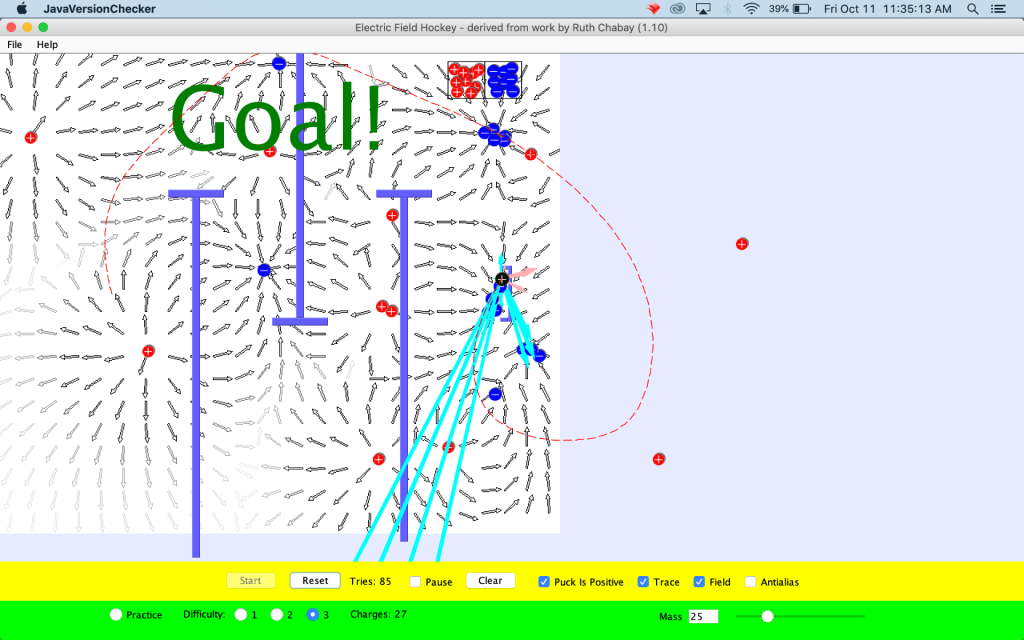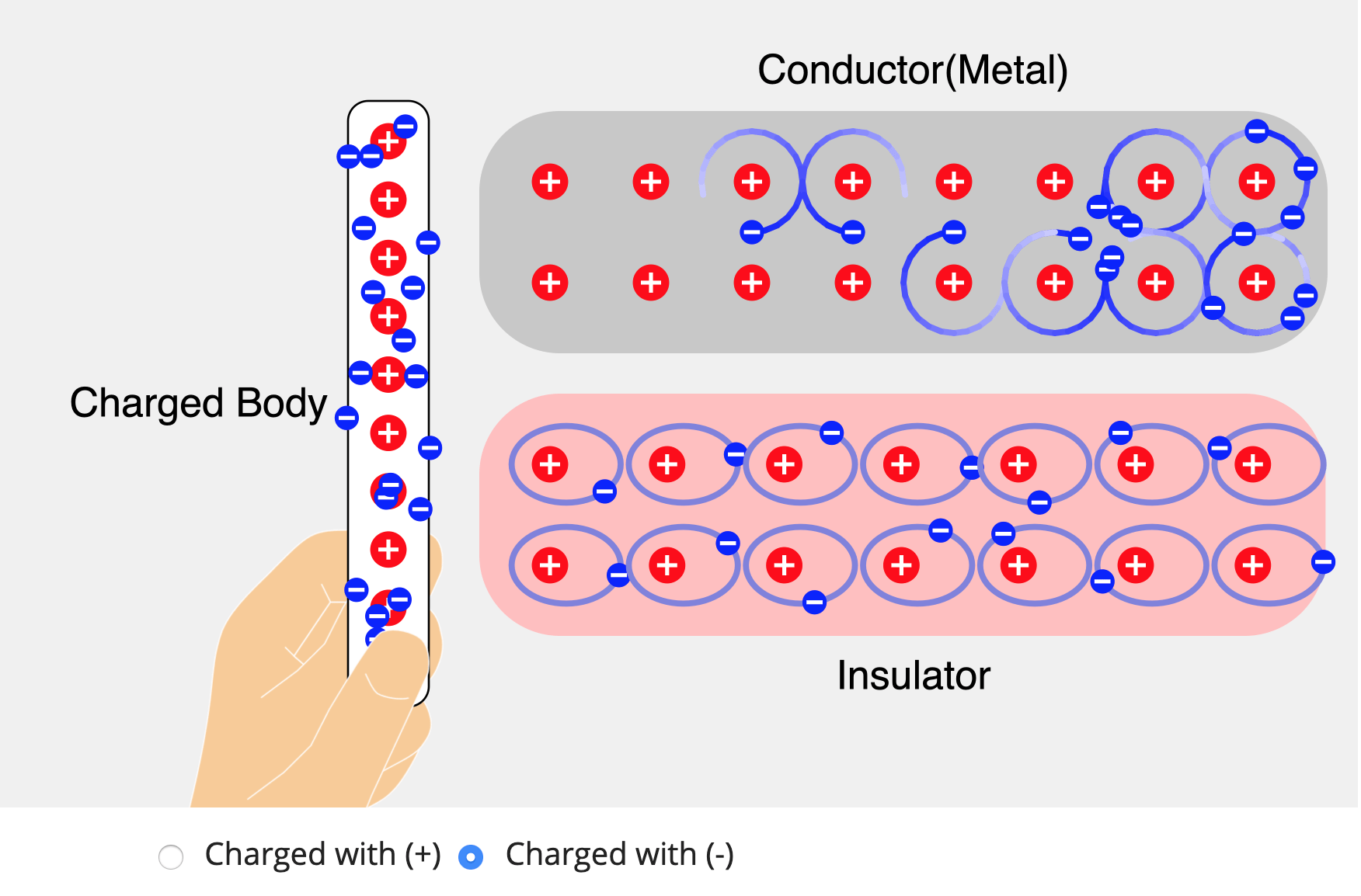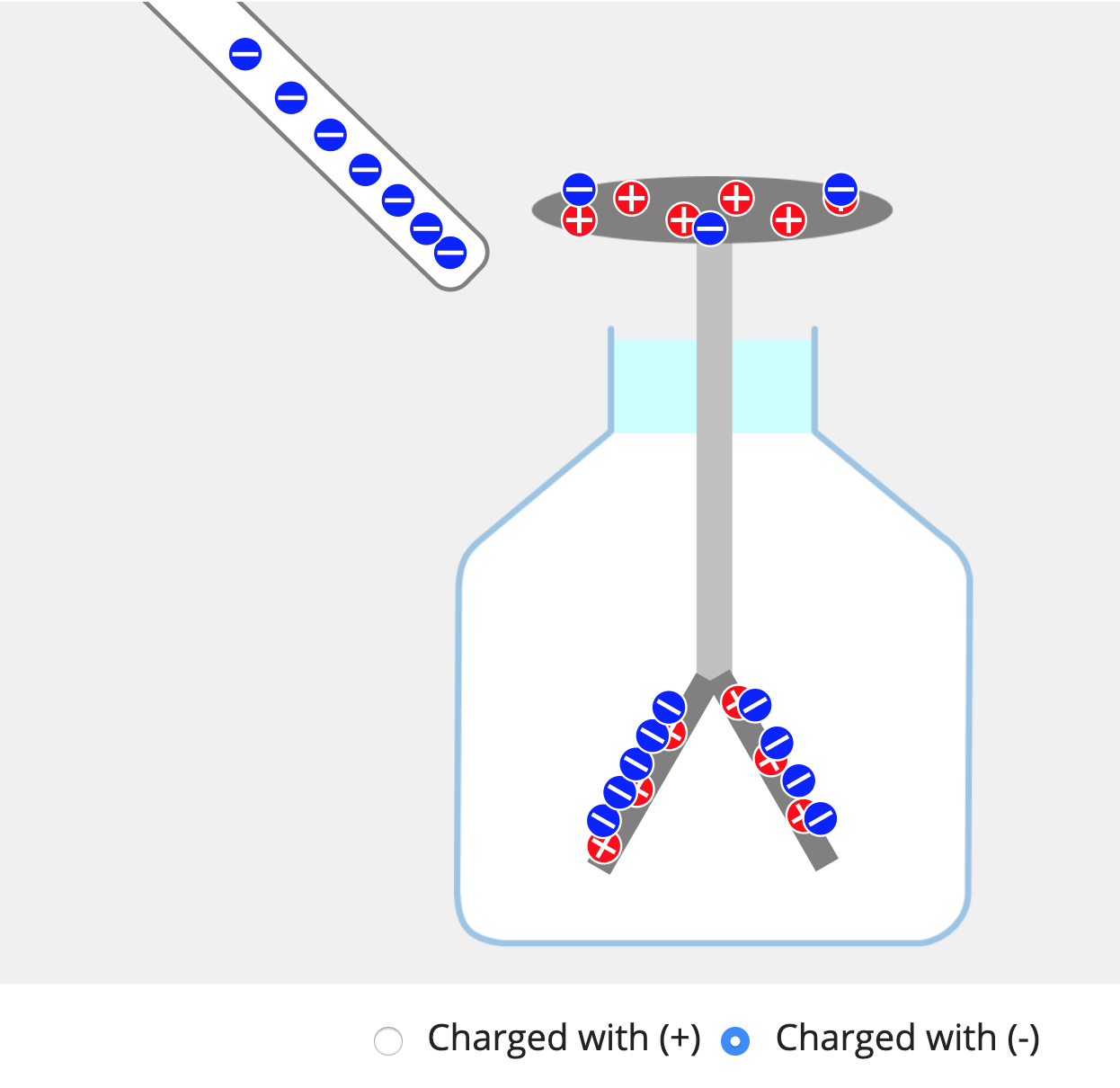Project by: Max Zinman (12th Grade)
Project Advisor: Preethi Thomas-McKnight
Student(s)’s Advisor(s): Shafeiq Baksh
Description of the Project:
======
Trimester 2 Update
We have been working further with electricity this trimester, particularly in the realm of electric potential, electric potential energy, and circuits. I have been understanding circuits and circuit diagrams fairly easily, and have been working with a simulation that involves creating such circuits digitally. An example of something I learned from this simulation is that the current of a circuit is directly proportional to the total voltage and inversely proportional to the amount of resistance it comes into contact with. If you multiple the voltage by two, the current is doubled. If the resistance is multiplied by two, the current is halved. Additionally, the current follows the path of “least resistance”. In one circuit I looked at, there was a fork in the circuit, where one path had a resistance of zero Ohms and the other path had a resistance of 10 ohms, and the current went through the former path and completely bypassed the second path.
However, I am having more trouble understanding electric potential and electric potential energy, and more importantly the differences between them.
Update on Progress from Weeks 4-6 (include any photos or video if relevant):
We have done more work with electric potential and electric potential energy, and I am starting to get a better grasp on how to use the two, and the difference. Electric potential is in relation to certain points in a field, and how far those points are from the origin of the field, and electric potential energy is that but applied to objects or particles with specific charges at those points, and the energy they have as a result of being at the given points.
Update on Progress from Weeks 7-9 (include any photos or video if relevant):
Throughout this time period we worked more on circuits specifically, and learned about current. Current is equal to the total voltage of a circuit divided by the total resistance (I = V/R), and using this we can figure out how fast particles are moving in a given circuit, series or parallel. Speaking of which, I also learned the difference between those two types of circuits. Series circuits are circuits where all elements are on the same path, both batteries and resistors. These are typically more simple and easier to understand since the resistances and voltages are simply the sum of all respective constituent values. Parallel circuits are circuits where there are multiple paths that the current can take. These are typically more complicated, due to the more complex way of calculating total resistance. However, the benefit of these circuits is that the elements aren’t all dependent on each other. For example, if one part of a series circuit stops functioning, then the entire circuit can no longer work since it’s all on one path, and the path being broken has created an open circuit. In a series circuit, if one element malfunctions, only the path that the element in question is a part of will stop functioning; the rest of the circuit will be fine, since they are on other paths and the current will simply avoid the broken path and follow the working one(s), allowing for the circuit to continue to do its job.
====================================================================
Trimester 1 Update:
Throughout this trimester, I have worked with Preethi to learn about the physics of electricity. To accomplish this, I have used a number of simulations in order to observe and work with characteristics of electricity, such as the Electric Field Hockey simulation, which provided an introduction to how charges interact with each other, and the Conductor and Insulator simulation, which was one of several simulations I used to learn about how charges affect objects, with this one specifically dealing with the differences between insulators and conductors.
I have taken notes on every simulation to organize my thoughts and prepare for the next meeting with Preethi. Additionally, Preethi often gives me work packets to provide a more structured and specific learning experience and goal than the basic exploration of the simulations, which is more free-form and mainly serves to provide a preliminary understanding of a given topic.
The biggest challenge that I’ve had to deal with during this honors project so far was understanding electroscopes.
I was only able to work with a simulation of one, and as such it was more difficult to understand than by using a physical version of one. However, by working with that simulation more and getting an explanation from Preethi I was able to overcome that challenge for the most part.
I have many questions relating to my project. The two that I am most interested in pursuing further are 1) how does electricity relate to magnetism, and 2) what is necessary to use electricity as a power source and how was that use discovered in the first place?
The most obvious place to delve further in this project is in the realm of magnetism, which was planned to be the focus of our second trimester work from the start, and also the more real world applications of electricity, since so far the simulations I’ve used have all been theoretical. The only concrete example I’ve seen in a simulation was conduction by friction between a balloon and a sweater, which isn’t an application of electricity and more so an example of its existence.
I am thoroughly enjoying my project so far, and have learned so much throughout this trimester! I cannot wait to start working on it again after Winter break!
=========================================================
PROJECT PROPOSAL:
Please write a description of the project you are proposing. Why do you want to take this on, and what do you hope to learn?
In general I would like to study how magnetic and electromagnetic fields work, how they are generated, and potentially what role they play in our lives both visibly and invisibly. It would be a predominantly research based project with maybe certain small experiments with magnets to directly observe their effects, culminating with a paper or a poster presenting what I learned. I want to take this on because I am very interested in physics, and the Physics II course on electricity and magnetism was especially interesting. Since I have to take a biology class this year I can’t take that class, and I felt that an honors project was a good way to learn it given the circumstances. I hope to learn the basics of magnetism, what it actually is, and how it works.
Critical thinking, creativity, citizenship and courage are essential LREI learning values. Explain how you’ll draw on at least one of these values to complete your proposed project?
I think I will certainly draw on critical thinking during this project in order to analyze any research or experiment based evidence that I find. I wouldn’t be able to simply write notes on what I read and suddenly learn, I’d have to actually think about what I see and relate it to things I already know and other things I may have found during the project.
What is your proposed outcome? How will you be able to demonstrate successful completion of this Project? How do you plan to share your learnings with the larger LREI community (e.g., exhibit of work, poster of learnings, performance, etc.)?
The outcome/goal I would like to obtain by the end of the project is a strong understanding of magnetism. I think the best way to demonstrate completion would be either in a research paper on a specific magnetic/electromagnetic phenomenon or in a poster presenting my question, process, and results on it. I lean a little more towards the paper option, since I think it would force me to get more specific than a poster would, although I understand that a poster is an easier way of showing my work to the community.
Please provide a general outline that indicates your work plan for the trimester? What are some of the key project benchmarks (i.e., goals that will help to ensure that you finish the project)?
The first step would be to learn about basic electric charges and fields, then to expand on that with magnetism. After that, I would delve into electromagnetism and the specific subject that I want to research in depth, which would lead to the research paper and/or poster. I may expand further in trimester two to go even further.
When do you plan on meeting?
Friday after school, probably in the lobby.
Trimester 3: Limited but Interesting Progress
During the third trimester, work on my electricity and magnetism project was unfortunately little. Due to Senior Project, both Preethi and I had a lot else going on and the circumstances put in place by the pandemic also made working on it harder. Despite this, we did do some work on magnetism, albeit mostly surface level. The most interesting thing I learned this trimester was about the directionality of magnetic fields, and how it compares to that of electric fields. A magnetic field has North and South as its two directions as opposed to the positive and negative of an electric field. They work both work rather similarly, with the same equipotential lines being present in a magnetic dipole field as in an electric dipole field. One thing I found particularly interesting is how magnetic North and South poles relate to Earth’s North and South poles. As I learned early on in my work with electricity, opposites attract: positive attracts to negative, and North attracts to South. In compasses, the part that points North is the magnetic north pole of the compass because it is being attracted to the magnetic field at the North pole. This means that the polarity of the North pole is actually magnetically South, and vice versa for the South pole. They are obviously North and South due to their directionality, but magnetically speaking they are assigned the pole that they attract, not the pole that they are.
Final Reflection
Throughout this year, I have learned a lot about electricity, and while I didn’t get to learn as much as I might have wanted to about magnetism, I still very much enjoyed learning what I did. We started out by looking at electricity on the most fundamental and basic level, with what it actually is. We looked at how the movement of particles, specifically electrons, creates the phenomenon we know as electricity, and how the particles in different materials behave differently. A conductor like copper has electrons that can move freely away from the protons they are paired with and transfer into a different material, and insulators like rubber have electrons that are locked in an orbit around their protons, preventing movement of electrons between materials and electric current from flowing by extension. One of the tougher subjects for me to grasp that we worked with was electric potential and electric potential energy. Electric potential is the work (force) required to move a charge in a field from one point to another, and electric potential energy is the energy stored in a charge at a certain point relative to another. Finally, we looked at electric circuits and their components. The main components of an electric circuit are the battery, which provides the electric potential difference to move electrons through the circuit; the wires, which serve as the roads by which the electrons travel; and the resistors (e.g. lightbulbs), which use the electricity from the moving electrons to create a particular result. These components each have values associated with them. Voltage for batteries, which determines how much force they can impart upon the electrons to move them through the wires; current for wires, which is the speed at which the electrons are moving through them, and resistance for resistors, which is essentially the quantification of the energy usage in the circuit. We also looked at the two different types of a circuit, called series (all elements are along a single path) and parallel (where the elements are in different pathways branching off of the main circuit that are parallel to each other). In a series circuit, the current is directly proportional to the voltage of the circuit and inversely proportional to the resistance, and the voltage is simply the total voltage of all batteries and the resistances is the total of all resistors. In a parallel circuit, however, the values are considerably more annoying to calculate. The maximum current of a parallel circuit with 1 bulb per pathway is the total voltage multiplied by the number of pathways. To calculate the resistance you first do 1/Rtotal = 1/R1 + 1/R2 + 1/R3 + …, and then find the inverse. These two types of circuits represent the two different types of electrical current. Series circuits use direct current, since the current goes directly from one end of the battery through every element in the circuit to the other end of the battery. While this is fairly simple, and it is easy to increase the output of any resistors like lightbulbs since everything is in one line, if any one element in the circuit fails, the whole thing fails since the current goes through every single element, and thus requires them all to work. A parallel circuit uses alternating current, since it has several alternate pathways to go through. Despite parallel circuits being annoying to work with in terms of the physics and calculations of their values, they are much more reliable. Because the current doesn’t go through each individual element in every pathway, if one pathway has a failure, the circuit will still work since the other pathways aren’t impacted by the components of the malfunctioning pathway, allowing machinery with this type of circuit to continue to function even when damage is present and under repair in one pathway. Then, we moved into magnetism, which we unfortunately didn’t get very far into, but I was able to find some interesting relationships between the polarity of magnetism and the polarity of our planet. In general, however, magnetic fields work under many of the same rules that electric fields have. I had a great time learning about electricity (and slightly magnetism) with Preethi this year, and I am extremely grateful for her allowing me to effectively take this class one-on-one with her despite me not actually being her student this year.






